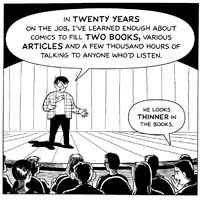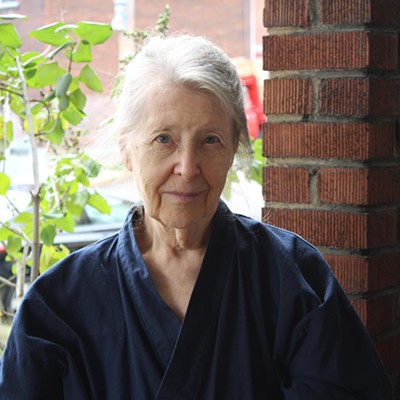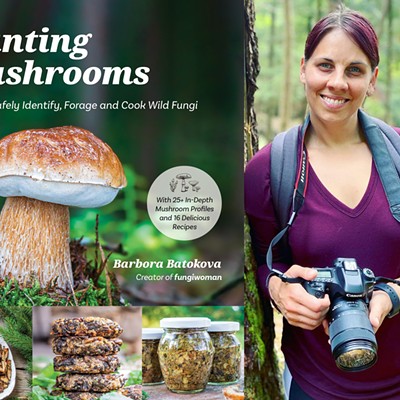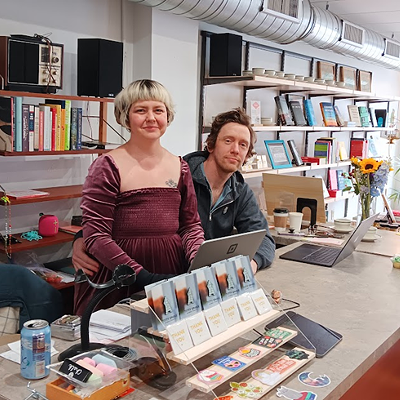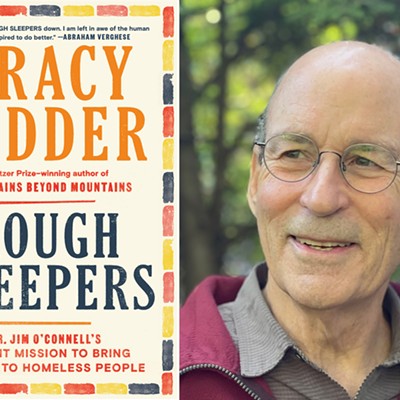Scott McCloud decided to become a comic artist at age 15. While few amateur enthusiasts get to live out their dream, after graduating from college McCloud started work in the DC Comics Production Department. He created and sold his first comic, Zot!, for Eclipse Comics in 1983. Ten years later he published Understanding Comics, a breakthrough handbook that was both a how-to manual and a philosophical work. Understanding Comics prompted Sin City creator Frank Miller to call McCloud "just about the smartest guy in comics."
Now McCloud is on the road. McCloud, his wife, Ivy, and their tween-age
daughters, Winter and Sky, are three months into a year in which they'll visit all 50 United States to promote his new book, Making Comics: Storytelling Secrets of Comics, Manga and Graphic Novels.
In Making Comics, you return to the territory that you pursued with Understanding Comics.
I have returned to my concern with how comics work on a micro level. It's about how we use pictures, perspective, scale, style and facial expression to tell stories, and how visual narrative actually works.
Your second book, Reinventing Comics, was very controversial. In a scathing review, noted comic artist Gary Groth banished you to "McCloud Cuckoo-Land." What prompted such controversy?
In Reinventing Comics I argued that the Internet could provide a unique space for comic artists to connect directly with their readers. I also suggested that the comic form could be uniquely suited to the medium of the Web. While not all of my predictions have come true, many online comics are having success with a process called "infinite canvas" that allows the reader to scroll through comic frames, almost like a slide show.
I also advocated the idea of micropayments, the idea of the viewer paying a small amount of money directly to the artist, like we do when we buy songs for our iPod. My own experiments with this have not been that successful, but I'm not going to give up on the idea altogether.
As to why it was so controversial ... some argued that I was overly optimistic about the utopian possibilities of the Web; others are still very attached to the idea that comics have to be produced and distributed as physical objects -- something we can hold in our hands.
What can those who don't draw comics learn from Making Comics?
This book is obviously for aspiring cartoonists. So far I've gotten a free pass from my target audience; the response has been very enthusiastic. But I've also been told that Making Comics is relevant to the practice[s] of film editing, theater and storytelling. What I've tried to illustrate, a kind of a calligraphy of human gesture, is applicable to a number of arts.
In Making Comics, you depict yourself as a comic artist with a lot to learn. It's a strange approach for an expert.
I did write this book in order to teach myself, and others, how to be a better comic artist. I've incorporated a lot of aspects of my own life, and I've positioned myself as both teacher and learner. The desire to write this book came from my own deep dissatisfaction with my work as a comic artist.
How do you feel about having a better reputation as a comic theorist than as a comic artist?
After the tour I intend to start in on a very sizable piece of graphic fiction. Before writing Making Comics I wasn't sure I was the right person to draw the story I've had in my head for several years. Now I am.
How did the idea for a family book tour come about?
My wife thought we should see all 50 states. When I proposed that we combine our family trip with a book tour, my editors at Harper were very excited. Right now I have at least one speaking engagement arranged in every state, a few in Canada and, since the tour started, we've also been to Barcelona and London.
What are your daughters doing on this trip?
We are home-schooling our daughters on this trip, or, rather, they are home-schooling themselves. Our youngest daughter, Winter, age 11, is doing a series of interviews she's calling "Winterviews" with artists that we meet along the way. Our oldest daughter, Sky, age 13, is editing the Winterviews for online viewing. Sky has also produced a seven-minute PowerPoint presentation about our trip that we use to begin my talks when we have time. Finally, the whole family is blogging about our experience [www.scottmccloud.com].
You are living out a kind of weird, 1950s fantasy of family togetherness. What's worst and best about being on the road?
The worst part is just how hard it is to keep up with daily life -- little things like doing laundry, responding to e-mail, and constantly packing/unpacking the car. The best part is meeting the people who have been touched by my work and having unusual, unforgettable moments with my family. When we were in Barcelona we were eating ice cream near the edge of the ocean when it started to rain. We sat and watched as the rain came thundering down, eating our ice cream, and hoping we wouldn't get struck by lightning. It was beautiful and scary.
Scott McCloud lectures at 4:30 p.m. Thu., Dec. 7. McConomy Auditorium, CMU campus, Oakland. Free. 412-268-9510

